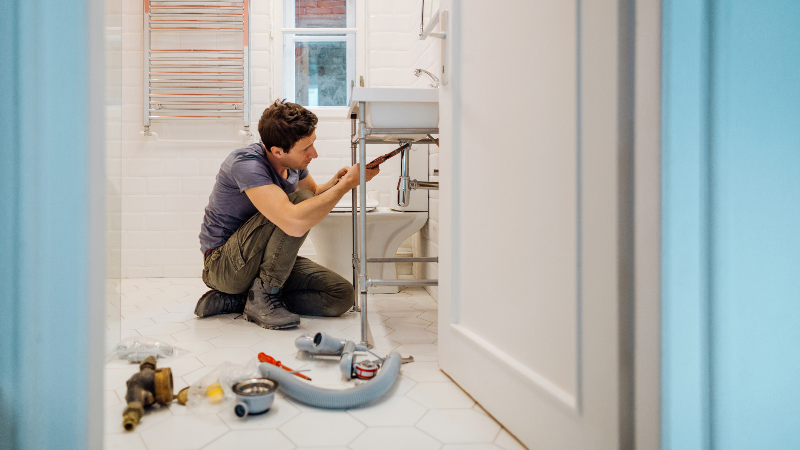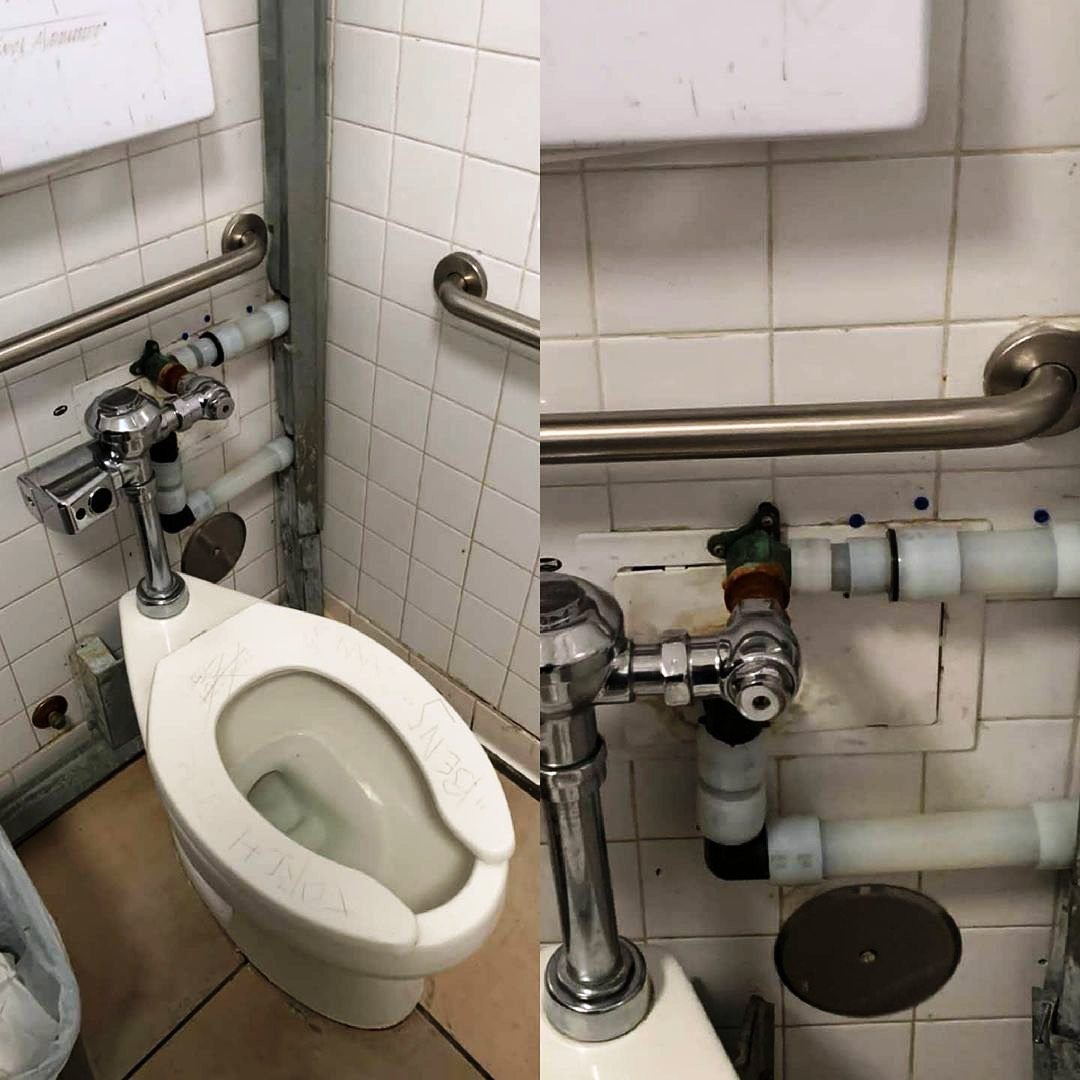We have uncovered this article about Diagnose Unwanted Plumbing Noises listed below on the net and thought it made sense to write about it with you on this page.

To diagnose noisy plumbing, it is essential to determine first whether the unwanted noises happen on the system's inlet side-in various other words, when water is turned on-or on the drainpipe side. Sounds on the inlet side have varied reasons: excessive water pressure, used shutoff as well as faucet parts, poorly linked pumps or other appliances, improperly put pipe fasteners, as well as plumbing runs consisting of way too many limited bends or various other limitations. Sounds on the drainpipe side normally come from bad place or, just like some inlet side noise, a layout containing limited bends.
Hissing
Hissing sound that takes place when a faucet is opened slightly generally signals too much water stress. Consult your regional water company if you suspect this trouble; it will be able to inform you the water stress in your area and can set up a pressurereducing valve on the inbound water system pipe if necessary.
Various Other Inlet Side Noises
Creaking, squeaking, damaging, snapping, and touching typically are brought on by the growth or contraction of pipelines, typically copper ones supplying warm water. The sounds take place as the pipelines slide against loosened fasteners or strike neighboring home framing. You can frequently pinpoint the place of the problem if the pipelines are subjected; simply comply with the sound when the pipelines are making noise. More than likely you will certainly find a loosened pipe wall mount or an area where pipelines lie so near floor joists or various other framing items that they clatter against them. Attaching foam pipeline insulation around the pipes at the point of call ought to treat the issue. Be sure bands and hangers are secure as well as provide appropriate support. Where possible, pipeline fasteners need to be attached to substantial structural components such as foundation wall surfaces as opposed to to framing; doing so decreases the transmission of vibrations from plumbing to surfaces that can magnify and also transfer them. If connecting bolts to framing is inescapable, wrap pipes with insulation or various other resilient product where they speak to bolts, and sandwich completions of brand-new fasteners between rubber washing machines when installing them.
Fixing plumbing runs that experience flow-restricting limited or various bends is a last resource that should be embarked on just after speaking with a competent plumbing service provider. Unfortunately, this situation is relatively usual in older houses that may not have been constructed with interior plumbing or that have seen several remodels, especially by amateurs.
Chattering or Shrieking
Extreme chattering or shrilling that takes place when a valve or faucet is switched on, which generally goes away when the fitting is opened fully, signals loosened or defective internal parts. The option is to change the shutoff or tap with a brand-new one.
Pumps and also appliances such as washing devices as well as dishwashing machines can move electric motor sound to pipelines if they are poorly attached. Link such items to plumbing with plastic or rubber hoses-never rigid pipe-to isolate them.
Drainpipe Noise
On the drain side of plumbing, the chief goals are to remove surface areas that can be struck by dropping or hurrying water and also to shield pipelines to contain unavoidable sounds.
In new construction, bathtubs, shower stalls, toilets, and wallmounted sinks and containers need to be set on or versus resistant underlayments to lower the transmission of audio via them. Water-saving commodes and also taps are much less noisy than traditional models; mount them as opposed to older types even if codes in your area still allow making use of older fixtures.
Drainpipes that do not run up and down to the cellar or that branch into horizontal pipeline runs sustained at floor joists or other framing present particularly frustrating sound issues. Such pipes are large enough to emit substantial resonance; they likewise carry significant quantities of water, that makes the circumstance worse. In new building and construction, define cast-iron soil pipes (the huge pipelines that drain toilets) if you can manage them. Their massiveness contains a lot of the noise made by water passing through them. Likewise, avoid transmitting drains in walls shown to bedrooms and also spaces where people collect. Walls consisting of drainpipes need to be soundproofed as was explained earlier, making use of dual panels of sound-insulating fiberboard and also wallboard. Pipelines themselves can be wrapped with unique fiberglass insulation produced the purpose; such pipelines have an invulnerable plastic skin (often containing lead). Outcomes are not always sufficient.
Thudding
Thudding sound, frequently accompanied by shivering pipelines, when a faucet or home appliance shutoff is shut off is a condition called water hammer. The noise and also resonance are caused by the resounding wave of pressure in the water, which instantly has no location to go. Occasionally opening a shutoff that releases water quickly into an area of piping including a constraint, elbow joint, or tee fitting can create the same problem.
Water hammer can normally be cured by mounting fittings called air chambers or shock absorbers in the plumbing to which the trouble valves or taps are linked. These devices permit the shock wave created by the halted circulation of water to dissipate in the air they have, which (unlike water) is compressible.
Older plumbing systems may have short upright sections of capped pipeline behind walls on tap runs for the exact same purpose; these can ultimately fill with water, minimizing or destroying their performance. The cure is to drain pipes the water system entirely by shutting off the primary water shutoff as well as opening up all faucets. After that open up the main supply valve and also shut the faucets one by one, beginning with the faucet nearest the valve as well as finishing with the one farthest away.
If Your Plumbing is Making These Sounds, There’s a Problem
A Bang or Thump When You Turn Off a Faucet
If a loud bang or thump greets you each time your turn off running water, you likely have a water hammer. A water hammer occurs when the water velocity is brought to a halt, sending a shock wave through the pipe. It can be pretty jarring — even worse, damaging to your plumbing system. All that thudding could loosen connections.
Strange Toilet Noises
You’re so familiar with the sounds your toilet makes that your ears will be attuned to anything out of the ordinary. Fortunately, most unusual toilet noises can be narrowed down to just one of several problems.
Foghorn sound:
Open the toilet tank Flush the toilet When you hear the foghorn noise, lift the float to the top of the tank If you’re ambitious, you can remove the ballcock valve and disassemble it to replace the washer. Or you can more easily replace the ballcock valve entirely. This device is relatively inexpensive and available at most any hardware store.
Persistent hissing:
The hissing following a flush is the sound of the tank filling. It should stop once the tank is full. But if the hissing continues, it’s likely because water is leaking out of the tank. The rubber flap at the bottom of the tank can degrade, letting water slip through and into the bowl. That’s why the tank is refilling continuously. Fortunately, this is an easy fix:
Cut the water to the toilet by closing the shutoff valve on the water supply line. Flush the toilet to drain the tank. Disconnect the flapper Attach the new flapper Gurgling or bubbling:
Gurgling or bubbling suggests negative air pressure in the drain line, likely resulting from a clog. As air releases, it causes the water in the toilet to bubble. This could either be a minor issue or a major one, depending on the clog’s severity. Clogs can be caused by toilet paper or more stubborn obstructions such as tree roots. If you can’t work out the clog with a plunger, contact a professional plumber for assistance because a clog of this magnitude could lead to filthy and unsanitary sewage backups in your sink bathtub.

Do you like reading up on Diagnose Unwanted Plumbing Noises? Leave a remark below. We will be glad to listen to your thoughts about this blog entry. Hoping that you come back again in the near future. Appreciated our content? Please share it. Help somebody else discover it. Thank you for taking the time to read it.
Go Services